2016 Yankee Magazine Editors’ Choice Food Awards
Celebrating the best artisanal cheeses, charcuterie, jams, sweets, and other holiday treats in our annual New England food awards.

Coffee By Design | Portland, Maine
Photo Credit : Katherine KeenanBy Amy Traverso & Kelsey Liebenson-Morse
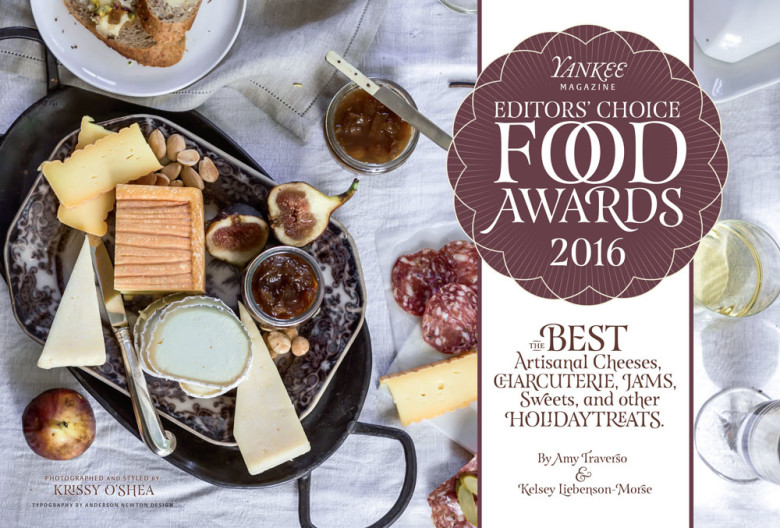
Four years ago, we noticed a missing link in the New England food landscape. For all the “Best of” awards celebrating restaurants and chefs around the region, there weren’t any equivalent local awards for all the delicious specialty foods that we saw coming to the market with increasing frequency. So we launched our own Editors’ Choice Food Awards. On our travels around New England, we began scouring farmers’ markets, gourmet shops, festivals, and supermarkets. The best of these products won inaugural awards in 2013.
Now, with our fourth annual list, we’ve taken a slightly different approach. We know our readers love a good story, so we narrowed our field of winners to be able to tell their stories in more depth.
As always, we choose not to organize the awards around a single best-in-category winner. Choosing just one best berry jam or goat cheese would lock up these categories, preventing us from bringing other, equally worthy products to light. Frankly, there’s too much good food out there to paint ourselves into that corner. Think of these as “awards of excellence,” rather than an either/or competition.
In that spirit, we hope you’ll enjoy these New England treats. All products are available by mail; visit the makers’ websites to learn where you can find them locally. Serve them at a party or give them as gifts to others. Happy Holidays!
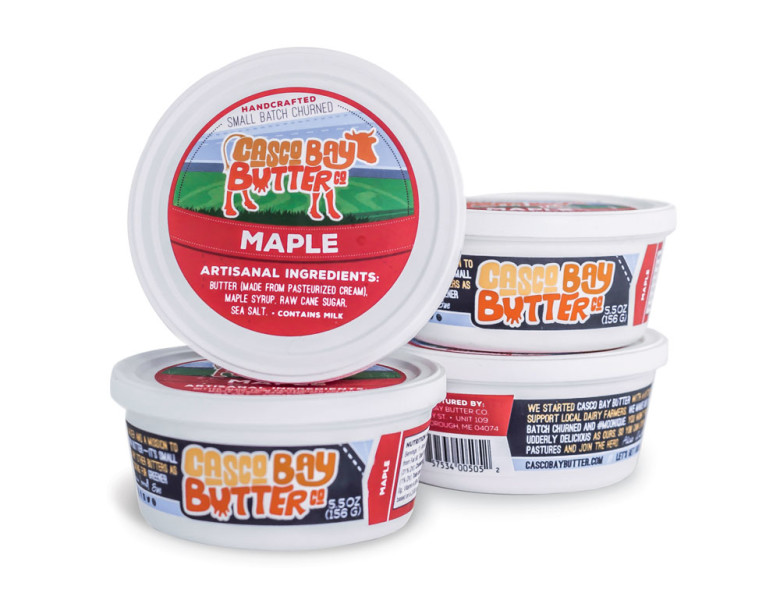
Photo Credit : Krissy O'Shea
MAPLE BUTTER Casco Bay Butter, Scarborough, Maine
Alicia Menard and Jennell Carter started churning small-batch butter using borrowed KitchenAids in a church basement in Portland, Maine. When they sold 54 tubs of store-bought butter flavored with bacon and blue cheese at the Kennebunk farmers’ market in the summer of 2012, they knew their instincts were right. The partners now churn their own butter and offer nearly 20 different flavors, including Blue Cheese, Cinnamon Sugar, Truffle, and Cranberry Orange, but their Maple Butter, made with local organic syrup, is our favorite for slathering on bread, and drizzling over root vegetables and corn on the cob (it also makes a great glaze for salmon or shrimp). Meanwhile, Alicia’s and Jennell’s company has now grown to include four employees and has moved into a storefront in Scarborough where the butter is still hand-churned, packaged, and labeled. cascobaybutter.com
Suggested retail price: $6.50-7.50 for a 5.5-ounce tub

Photo Credit : Krissy O'Shea
TOBASI Cricket Creek Farm, Williamstown, Massachusetts
When the Sabot family bought Cricket Creek, one of the oldest dairy operations in Massachusetts, in 2001, the goal was to preserve Williamstown’s largest single tract of farmland and create a sustainable cheesemaking operation. Dick Sabot, an economist and technology entrepreneur, and his wife, Jude, hadn’t planned to be farmers, but this mission called to them. They looked to Vermont’s Shelburne Farms as an example of what was possible. Then Dick died suddenly in 2005, a devastating loss. But the farm operation continued, and even grew: raising dairy cows on grass, not corn; running an on-site bakery; making cheese; feeding surplus whey to a passel of pigs and operating an on-site farm store. This is the kind of ingenuity you need to be a farmer in the 21st century.
“Dairy farms struggle with economic viability,” says Suzy Konecky, a cheesemaker who now manages the creamery operation. “We’ve had to ask ourselves hard questions over the years about whether your farm can stand on its two feet. We monitor each step. And that goes all the way down to the genetics of our cows, who can make milk efficiently on a grass-based diet.” It has also meant changing up the mix of cheeses in production, adding several younger, softer cheeses to the lineup in order to free up space in the aging room. One such addition: Tobasi, a sometimes nutty, sometimes mushroomy, always custardy washed-rind cheese, inspired by an Italian Taleggio. Aged two to four months, it’s washed in a brine “cocktail” with bacteria, yeast, and mold added in strict balance for maximum flavor.
We love it with hard cider, in a grilled cheese, or smeared on a baguette with fresh pears on the side. A smaller-format version of Tobasi, called Sophelise, has also joined the ranks. Toward the end of its aging, it’s washed in a locally made bourbon from Berkshire Mountain Distillers. “We can’t keep it in stock,” Suzy says. cricketcreekfarm.com
Suggested retail price: $24 per pound
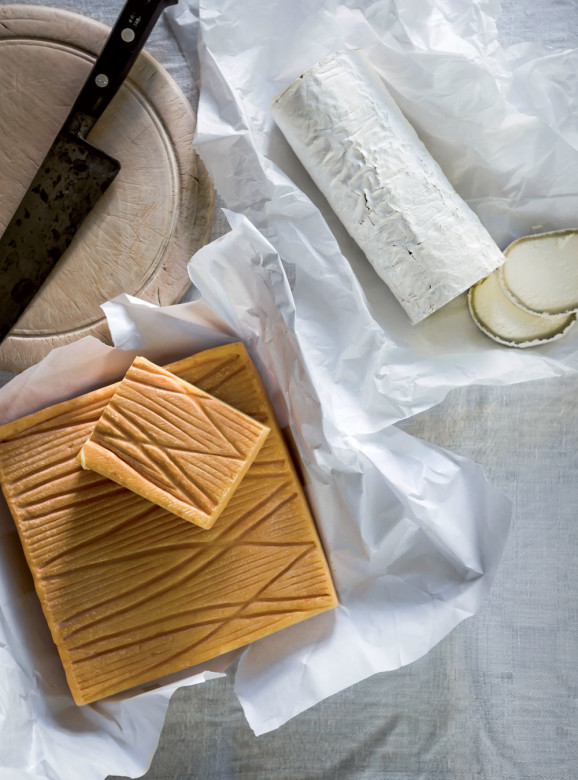
Photo Credit : Krissy O'Shea
CHÉVRE ROLL WITH ASH York Hill Farm, New Sharon, Maine
We’ve long been fans of Penny and John Duncan’s cheeses, which were some of the first fresh chèvres being made in New England back in 1987. The couple moved to Maine from Connecticut in 1981 to raise their children and found a shared love of farming. Years later, they still relish the independence of farming. “You create your own reality,” John says. Penny, who learned the art of cheese-making from books and trial and error, does the bulk of the cheese production, milking the goats twice a day and turning 75-gallon batches of milk into cheese three times per week. John handles the herd of white Saanan and Alpine goats, which grows and shrinks depending on the season, but can run as high as 55 head.
The vegetable ash that coats this particular chèvre promotes a milder flavor, toning down the usual goat’s milk tang. (Picky eaters take note: You’ll like this one.) Penny produces it in the spring and fall, when the milk is creamier, then introduces a male goat into the herd in late fall to begin the kidding cycle anew. After three weeks of maturing, the cheese is ready to go to market, and can be enjoyed for up to five weeks after purchase. yorkhillfarmmaine.com
Suggested retail price: $17.99/pound
FINOCCHIONA New England Charcuterie, Waltham, Massachusetts
This young company, just three years old, has hit the Boston dining scene like a juggernaut, starting with the instant-hit deli/café called Moody’s Provisions, then moving into a state-of-the-art production facility down the road last July—the state’s first licensed facility for curing and selling aged meats.
The company began with founder Joshua Smith, who discovered a love of charcuterie while working at a Dean & DeLuca shop in Charlotte, North Carolina, in his late teens. There, he learned to cut meat and turn the scraps into pâtés and sausages. Something clicked. He moved to Denver, northern California, and Seattle, studying under master charcutiers.
We especially love Joshua’s finocchiona, a classic Italian salami from southern Tuscany that’s known for a perfect sweet-salt balance accented with fennel seed. The company now has a portfolio of more than 100 products, including an excellent pastrami, delicious fresh sausages, and a growing list of wholesale clients, which means you’ll soon be seeing products in more stores. Just in time for the holiday season, they’re building out an e-commerce platform that will make it easier to order products online. And they hope to find more local farms to meet their ever-growing demands for quality meat. newenglandcharcuterie.com
Suggested retail price: $24.89 per pound
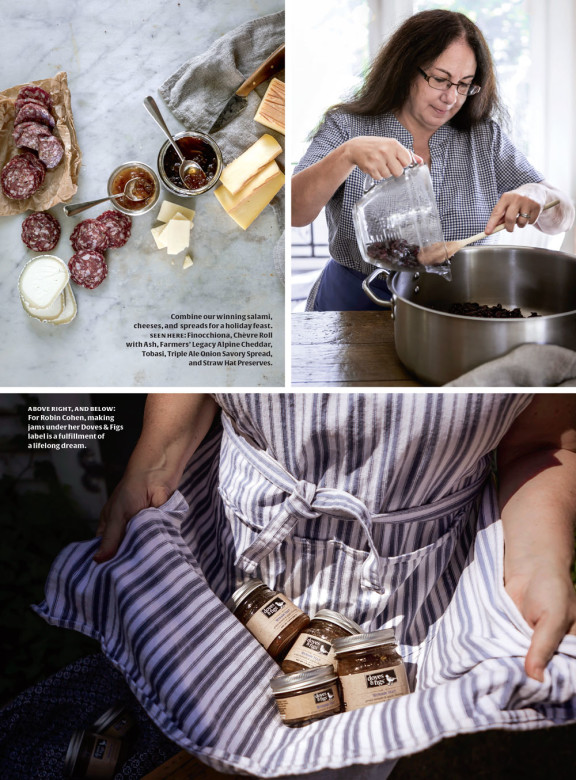
Photo Credit : Krissy O'Shea
FARMERS’ LEGACY ALPINE CHEDDAR Cabot Cheese, Cabot, Vermont
Cheese snobs may refer to “supermarket cheese” with a barely concealed sneer, but this nutty and mildly sweet cheddar, developed in conjunction with the Cabot cooperative’s 100th anniversary, may redefine the category. We first came across it at the Vermont Cheese-makers Festival and were instantly hooked: Something with layers of classic Alpine nuttiness (think Gruyère), with notes of Parmesan and yet still the underlying flavor and texture of cheddar? At $4.95 a bar?
Cabot’s team of cheese graders tastes each new batch and identifies how it should be aged, not hesitating to let it go up to 18 months to achieve perfect ripeness. Most of the milk comes from farms in Vermont, New Hampshire, and Massachusetts. Try it in a quiche, an omelet, on a tasting plate with apples, quince paste and nuts, or straight up as a midday snack. cabotcheese.coop
Suggested retail price: $4.95 for a 6-ounce bar
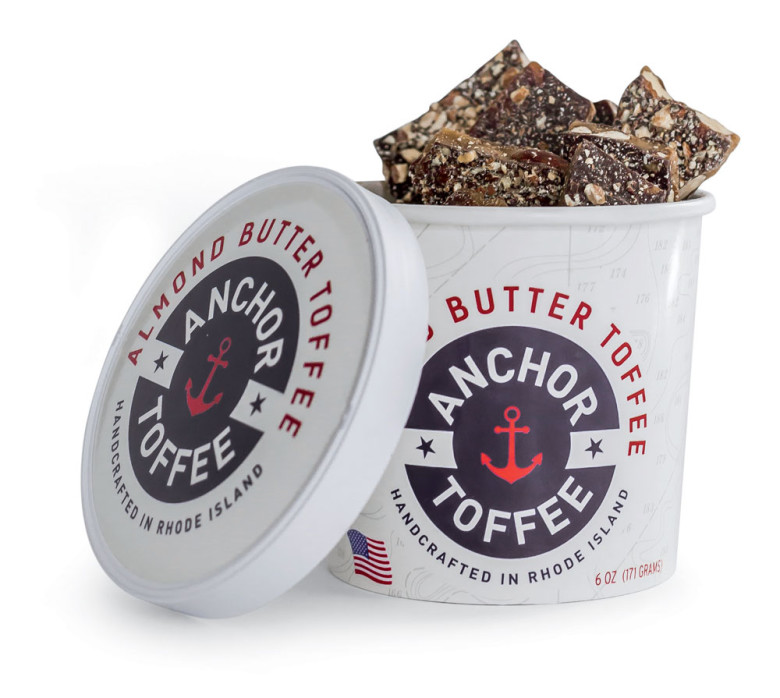
Photo Credit : Krissy O'Shea
ALMOND BUTTER TOFFEE Anchor Toffee, Warren, Rhode Island
Like most of the makers profiled here, Peter and Katie Kelly make their signature toffee by hand, in small batches. It has all the nutty and buttery tones of a great toffee, but what sets it apart are the toasted almonds suspended in the hard crack caramel, adding another layer of rich flavor. Plus, its crisper, more finely grained texture protects your teeth from the dreaded toffee stickiness.
Peter cooks each batch in a copper kettle, beginning with just a few simple ingredients: sugar, butter, salt, almonds, and chocolate. “The process has lots of appeal because people have been doing it the same way for 100 years,” he says. “It has this primal, pleasing aroma, evocative of fair food, and a super nutty toasty brown color. You can taste it just by the smell.” As the mixture cooks to the requisite 320°, Peter stirs with a large wooden paddle, adding the almonds to roast directly in the syrup. Then he pours it out onto large sheet pans to cool, aiming to make the toffee as thick as the almonds encased inside. When cooled, the candy is coated with dark chocolate and additional chopped almonds. A nut-free version is also available, and the Kellys will offer a peppermint-white chocolate toffee for the holidays. anchortoffee.com
Suggested retail price: $12 for a 6-ounce tub

Photo Credit : Krissy O'Shea
CHEWIE FRUTIES Torie & Howard, New Milford, Connecticut
Self-described “candy freak” Torie Burke spent years working as a decorative painter in the rarified New York design world before following her childhood passion and starting a candy company. The catalyst was the sudden onset of food allergies that rendered most of her favorite sweets off limits. “I wanted to create a food company that could make a difference for people,” she says. She partnered with Howard Slatkin, a longtime friend and renowned interior designer—his Slatkin & Co. business remains a leading home fragrance brand—and launched a line of organic hard candy pastilles in flavors like d’Anjou pear-cinnamon, Meyer lemon-raspberry, and pink grapefruit-tupelo honey. Packaged in retro-style recycled steel containers, they’re made without artificial flavorings or corn syrup, soy, dairy, or gluten; their vivid colors come from natural sources like beet juice and turmeric.
Within three years, the candies were being distributed to more than 4,000 stores and their next product, Chewie Fruities (think naturally sourced Starbursts), hit the market with flavors like pomegranate-nectarine, Meyer lemon-raspberry, and blood orange-honey. Like the best children’s television, the candies appeal to children inherently, but are sophisticated enough to nab their parents’ attention. The clean, potent flavors are as close to fresh fruit as any candy we’ve tasted. And with their pretty packaging, they make a charming gift. torieandhoward.com
Suggested retail price: $3.99 for a 4-ounce bag
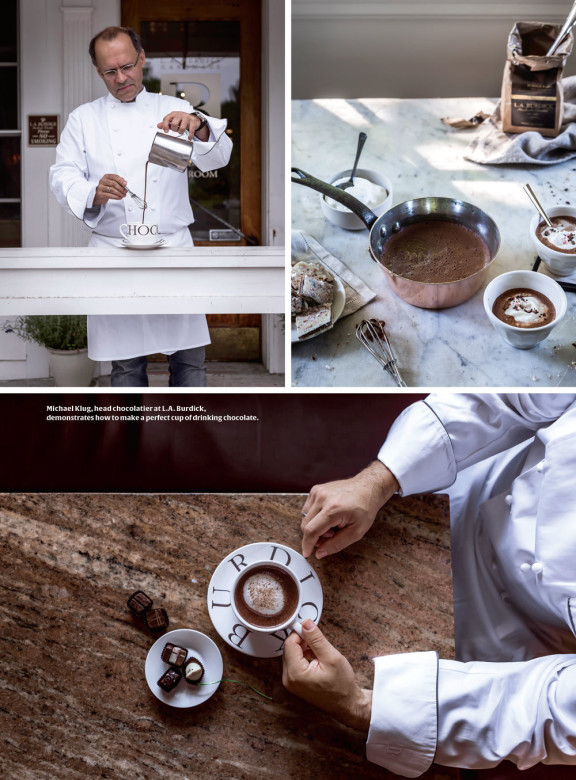
Photo Credit : Krissy O'Shea
DARK DRINKING CHOCOLATE L.A. Burdick Chocolate, Walpole, New Hampshire
It’s not difficult to make an exemplary cup of hot chocolate using this blend of Caribbean and South American chocolate, shaved just finely enough that it melts into hot milk with the ease of butter on toast. But there is one way to screw it up, according to head chocolatier Michael Klug.
“Do not overscald your milk,” he says. “If you do it with a thermometer, don’t go beyond 160 degrees. Steaming the milk to a nice, hot temperature between 145 to 160 will give you a good product.”
Stir it with a whisk, to get a little froth. The rest, he says, is up to you. Use skim milk, whole milk, almond milk. Add less chocolate, add more. “You have to find what you personally like the best,” Michael says. “Just like when you brew yourself a tea, you have to experiment with the dosage. Some like it more tannic; some like it milder.”
Michael, who has been with the company since 2002, trained in his native Germany, first as a traditional chef, then later as a pastry chef at top restaurants in Europe and New York. He brings knowledge of flavors, both sweet and savory, to his work with chocolate. A narrower focus seems to have sparked more creative inspiration. “I identify completely with the product, which is why I keep on doing it,” he says.
Larry and Paula Burdick first established the company in New York City in 1987, moving it to Walpole in 1992. This small New Hampshire town has become something of a foodie mecca, with Walpole Creamery (ice cream), Alyson’s Orchard, and Boggy Meadow Farm (cheese) also drawing crowds. In cooler months, most visitors can’t come to the Walpole headquarters, or its sister cafés in Boston, Cambridge, and Manhattan, without sipping hot chocolate, whether dark blend, milk, or white. And Michael is passionate about his line of single-origin drinking chocolates from cocoa-growing regions around the world, available seasonally. “If I taste a chocolate from Madagascar, it has a certain floral fruity flavor that you don’t find in the Caribbean,” he says, “and a certain nuttiness is typical of Venezuela. Finding these different characters is where it becomes truly interesting.” Still, we love the comforting consistency of the dark blend, which is rich enough to satisfy in small doses and always available in stores or online. burdickchocolate.com
Suggested retail price: $22 for a 12-ounce bag
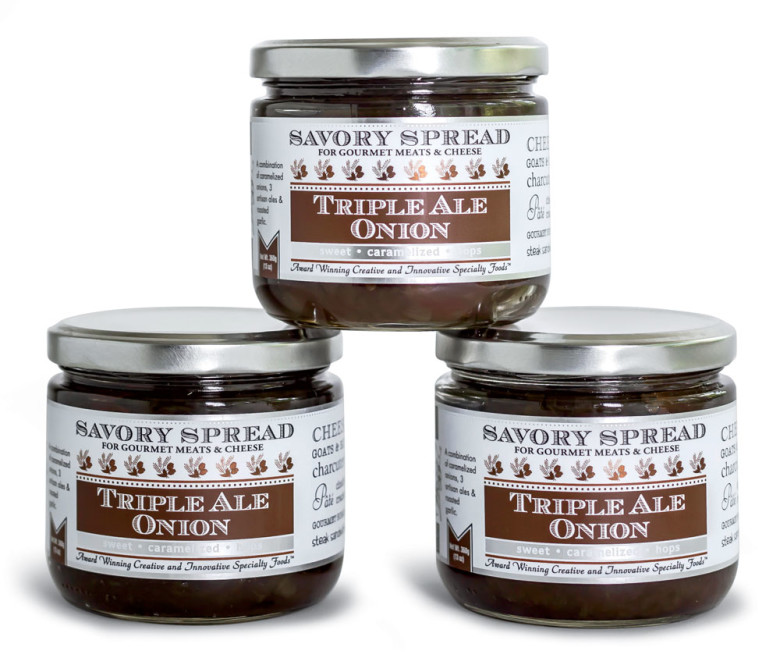
Photo Credit : Krissy O'Shea
TRIPLE ALE ONION SAVORY SPREAD WOZZ Kitchen Creations, Bethlehem, New Hampshire & Hardwick, Vermont
Six years ago and half a world away, Warrick (“Wozz”) Dowsett and Ashley Thompson began selling gourmet condiments at farmers’ markets in Wozz’s native Australia. The products were all inspired by recipes that Wozz had developed over years of working as a chef on private yachts. That spiced beet relish that he had served with steaks on the ship? Can it. The ginger soy dressing? Bottle it. “We started this idea for fun a week before we got married,” Wozz says. “We weren’t expecting much from it. And it took off really quickly.”
Like so many products celebrated in these pages, early success at the local market convinced Wozz and Ashley that they had a product worth selling. In Wozz’s hands, bottled products burst with fresh flavor. It’s a matter of choosing the right ingredients, yes, but also to know when to stop cooking, as any consumer of ho-hum canned salsa will know.
In 2013, the couple relocated to Ashley’s home state of New Hampshire, positioning themselves within commuting distance from the Vermont Food Venture Center in Hardwick, a commercial kitchen and incubator for young companies. “Within nine months we won three SOFI awards [the Oscars of the food world] and our first award from Yankee [for their Balsamic Blueberry & Maple Vinegar],” Wozz says.
In fact, it took some restraint for us to wait three years before giving them a second award. The Triple Ale Onion spread hits the sweet spot between caramel and savory flavors, a perfect topping for a burger, some sharp cheddar, or turkey. “In Australia, when everyone is barbecuing, and they’ve got the onions going, someone will inevitably tip their beer on it ‘for flavor,’” Wozz says. “So you end up with these caramelized, beery onions for your hot dog or sandwich. When we came to the states, I thought I’d do an onion jam-and-beer thing. My father-in-law, who doesn’t have the most adventurous palate, loved it. I thought, ‘Now we have a winner.’” wozzkitchencreations.com
Suggested retail price: $10 for a 13-ounce jar
STRAW HAT PRESERVES Doves & Figs, Woburn, Massachusetts
When Robin Cohen’s customers find her handing out samples of Bramble Tea jam at a farmers’ market, they tend to imagine a slightly more agrarian backstory. And yes, she’s been making jam since she was a kid. But it all started in the Bronx. “My dad and my great-aunt were really great cooks, bakers, jam makers, picklers,” she says. In the summer, her family decamped to Montauk, where they owned a hotel. “Being around fresh food and preserving it and bringing it back for the winter was something that was always with me,” she says. “Then I went in a completely different direction.”
That direction was a 25-year career in technology. “But the whole time I had my computer business, I was always cooking and perpetually saying ‘I’m going to write a cookbook someday.’” She entered contests, winning “Best of Show” at the Topsfield Fair for her jams. “So when I turned 50 in 2011, I just said, ‘You know what? I really want to cook.’” For a while, it was a weekend-warrior project, with a booth at two farmers’ markets near her Arlington, Massachusetts, home. Consulting paid the bills. Then the market grew. “I created a jam with raspberries and Taza chocolate just as a fun thing to try,” she says, “and it was really delicious and the Taza folks loved it.” Local stores came calling. “Suddenly I needed a wholesale license and a commercial kitchen.” This past year, with the product in 50 stores around the country, she was finally able to work on Doves & Figs full-time in a new space in Woburn, with four employees. “We’ve gone from ‘Let’s buy eight boxes of strawberries,’ to about 800 pounds. And all the fresh fruit is coming from New England. About 80 percent is from Massachusetts.”
Take her Straw Hat chutney, made with apples and green tomatoes. “Once there’s a frost in fall, farmers are dying to get rid of tomatoes that didn’t ripen,” she says. “I’ve always loved green tomatoes. And I love sweet Indian mango chutney. An apple chutney seemed kind of plain, so we experimented with a few fruits and the green tomatoes had just the right texture.” Loaded with golden raisins and candied ginger, a little vinegar and layers of spice, the chutney is multilayered and multitextured, a natural fit for goat cheese, lamb, turkey, and cheddar.
Preserving local sourcing while scaling up the business isn’t easy, nor is it particularly remunerative. “Consultants tell us, ‘The first thing you’ve got to do is stop using expensive local fruit,’” Robin says. “But that’s the whole reason I’m doing this. It’s this idea of preserving a season. I can go to the supermarket and buy pretty good jam. But this is something really special. We know the farmers. We know how the fruit is grown. It was a whole lot easier to make money in the technology business. But this is a labor of love.” dovesandfigs.com
Suggested retail price: $12 for 11.5 ounces








Glad I found you guys. Or did you find me?